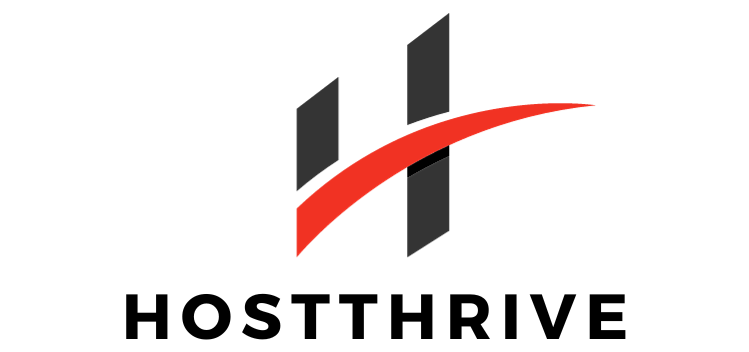The Evolution of Website Optimization
Did you know that website optimization has come a long way since the early days of the internet? In today’s digital age, optimizing your website is crucial to ensure a seamless user experience and improve your search engine rankings. Let’s take a look at some of the latest trends that you should watch out for in the future of website optimization.
Mobile-First Indexing
One of the biggest trends in website optimization is the shift towards mobile-first indexing. With more and more users accessing websites on their mobile devices, search engines like Google are now prioritizing mobile-friendly websites in their search results. Make sure your website is responsive and optimized for mobile to stay ahead of the game.
Voice Search Optimization
Another important trend to watch is voice search optimization. With the rise of virtual assistants like Siri, Alexa, and Google Assistant, more users are turning to voice search to find information online. To optimize your website for voice search, focus on long-tail keywords, natural language, and providing concise and relevant answers to common questions.
User Experience (UX) Design
User experience (UX) design plays a crucial role in website optimization. A well-designed website that is easy to navigate and visually appealing not only keeps users engaged but also improves your search engine rankings. Focus on creating a clean and intuitive user interface, fast loading times, and mobile optimization to enhance your website’s UX.
Artificial Intelligence (AI) and Machine Learning
Artificial intelligence (AI) and machine learning are revolutionizing website optimization. These technologies can analyze user behavior, personalize content, and automate tasks to improve the overall user experience. By leveraging AI and machine learning algorithms, you can optimize your website for specific user segments and drive more conversions.
The Importance of Page Speed Optimization
Page speed optimization is a critical aspect of website optimization that can greatly impact your website’s performance and user experience. Slow loading times can drive users away and negatively affect your search engine rankings. Let’s explore some key strategies to improve your website’s page speed.
Minify CSS, JavaScript, and HTML
One effective way to improve your website’s page speed is to minify CSS, JavaScript, and HTML files. Removing unnecessary line breaks, spaces, and comments can reduce file sizes and speed up loading times. Use tools like Minify, YUI Compressor, or Closure Compiler to optimize your code and enhance your website’s performance.
Enable Browser Caching
Browser caching allows web browsers to store static resources like images, stylesheets, and scripts locally, reducing the need to re-download them every time a user visits your website. By enabling browser caching, you can significantly improve your website’s page speed and provide a faster browsing experience for your users.
Optimize Images
Images are an essential part of web design, but they can also slow down your website if not optimized properly. Compressing images, choosing the right file format, and using responsive images can help reduce image file sizes and improve your website’s page speed. Tools like TinyPNG, JPEGmini, and Squoosh can help you optimize your images without compromising quality.
Implement Lazy Loading
Lazy loading is a technique that defers the loading of non-essential resources like images, videos, and iframes until they are needed. By implementing lazy loading, you can significantly reduce initial loading times and improve the overall performance of your website. Consider using libraries like Lazy Load or Intersection Observer to implement lazy loading on your website.
The Role of Content Optimization in Website Success
Content optimization is a key strategy for improving your website’s visibility, relevance, and user engagement. By optimizing your content for search engines and users, you can attract more traffic, generate leads, and ultimately drive conversions. Let’s explore some best practices for content optimization to enhance your website’s success.
Conduct Keyword Research
Keyword research is the foundation of content optimization. By identifying the right keywords for your target audience, you can create high-quality, relevant content that ranks well in search engine results. Use tools like Google Keyword Planner, SEMrush, or Ahrefs to discover relevant keywords with high search volume and low competition.
Write High-Quality Content
High-quality content that is informative, engaging, and well-written can attract and retain users on your website. Focus on creating content that addresses your audience’s needs, answers their questions, and provides valuable insights. Incorporate relevant keywords naturally into your content to improve its visibility in search engine results.
Optimize Meta Tags and Descriptions
Meta tags and descriptions play a crucial role in content optimization. Write compelling meta titles and descriptions that accurately describe your content and entice users to click through to your website. Include relevant keywords in your meta tags to improve your website’s relevance and visibility in search engine results.
Create a Content Calendar
Consistency is key to successful content optimization. Create a content calendar to plan and organize your content creation efforts. By publishing new, relevant content regularly, you can engage your audience, boost your search engine rankings, and establish your website as a trusted source of information in your industry.
The Impact of Mobile Optimization on Website Performance
Mobile optimization is essential for website success in today’s mobile-first world. With more users accessing websites on their smartphones and tablets, it’s crucial to ensure that your website is responsive, fast, and user-friendly on mobile devices. Let’s explore the impact of mobile optimization on website performance and some best practices to optimize your website for mobile.
Responsive Design
Responsive design is a fundamental aspect of mobile optimization. A responsive website adapts to different screen sizes and devices, providing a consistent user experience across all platforms. Make sure your website is mobile-friendly by using responsive design techniques like fluid grids, flexible images, and media queries.
Improve Page Speed
Page speed is even more critical on mobile devices, where users expect fast loading times and smooth browsing experiences. To improve your website’s page speed on mobile, minimize server response times, reduce file sizes, and enable compression. Consider using Google’s PageSpeed Insights or GTmetrix to identify and address performance issues on your mobile website.
Optimize User Experience
User experience (UX) is paramount on mobile devices, where users have limited screen space and navigation options. Optimize your website’s mobile UX by simplifying navigation, using larger fonts and buttons, and minimizing pop-ups and interstitials. Conduct user testing to identify and address usability issues on your mobile website.
Implement Accelerated Mobile Pages (AMP)
Accelerated Mobile Pages (AMP) is an open-source initiative by Google that aims to provide faster loading times and a better user experience on mobile devices. By implementing AMP on your website, you can create lightweight, streamlined versions of your webpages that load instantly on mobile devices. Consider using the official AMP plugin for WordPress or a custom AMP implementation to optimize your website for mobile.
The Role of SEO in Website Optimization
Search engine optimization (SEO) is a fundamental aspect of website optimization that can greatly impact your website’s visibility, traffic, and conversions. By optimizing your website for search engines, you can improve your rankings in search results, attract more organic traffic, and drive qualified leads to your website. Let’s delve into the role of SEO in website optimization and some best practices to enhance your website’s SEO performance.
On-Page Optimization
On-page optimization involves optimizing individual webpages to improve their relevance, visibility, and user experience. Focus on optimizing your meta tags, headings, content, and images for target keywords. Ensure that your website’s structure is clear and organized, with logical navigation and internal linking to help users and search engines navigate your website efficiently.
Off-Page Optimization
Off-page optimization focuses on external factors that influence your website’s search engine rankings, such as backlinks, social signals, and online reputation. Build high-quality backlinks from reputable websites, engage with your audience on social media, and monitor and respond to online reviews to improve your website’s authority and credibility in the eyes of search engines.
Technical SEO
Technical SEO involves optimizing the technical aspects of your website to improve its crawlability, indexability, and performance. Ensure that your website is mobile-friendly, fast, and secure, with clean and efficient code. Use tools like Google Search Console, Screaming Frog, and Moz Pro to identify and resolve technical issues that may impact your website’s SEO.
Local SEO
Local SEO is essential for businesses that target local customers and want to improve their visibility in local search results. Optimize your website for local searches by claiming and optimizing your Google My Business listing, creating location-specific landing pages, and building citations from local directories. Use tools like Moz Local or BrightLocal to manage and monitor your local SEO efforts.
Conclusion: Embracing the Future of Website Optimization
The future of website optimization is an exciting and ever-evolving landscape that presents new challenges and opportunities for website owners and digital marketers. By staying informed on the latest trends and best practices in website optimization, you can enhance your website’s performance, user experience, and search engine rankings. Start implementing the strategies and techniques discussed in this article to optimize your website for success in the digital age.












